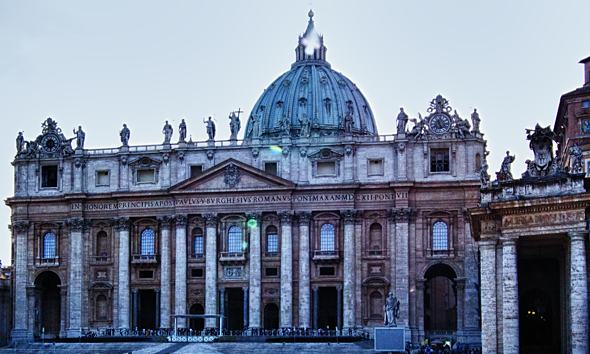The Colosseum, also known as Ancient Rome’s Grand Amphitheater, is an iconic symbol of the Roman Empire and one of the most magnificent architectural structures in history. It embodies the grandeur and splendor of ancient Rome, captivating visitors with its sheer size and historical significance.
But what exactly is the Colosseum? And why is it called the Colosseum? The Colosseum refers to a colossal amphitheater that was primarily used for gladiatorial contests, animal hunts, and other public spectacles. Its name “Colosseum” is believed to be derived from the colossal statue of Emperor Nero, known as the Colossus of Nero, that once stood nearby.
Steeped in history, the Colosseum’s construction began in 72 AD during the reign of Emperor Vespasian and was completed in 80 AD under Emperor Titus. It was commissioned as a gift to the Roman people and was built using various materials such as concrete, travertine stone, and tufa. Impressively, the Colosseum could accommodate around 50,000 to 80,000 spectators, making it the largest amphitheater in the Roman Empire.
Architecturally, the Colosseum boasts remarkable features that set it apart. The elliptical shape of the arena, the elaborate system of underground chambers, and the vast network of passages that facilitated the movement of people and animals all contribute to the Colosseum’s uniqueness.
The Colosseum served as a venue for various events, including gladiatorial games, mock naval battles, public executions, and dramas. These events were not only a form of entertainment but also served political and social purposes, showcasing the power and grandeur of the Roman Empire.
Throughout history, the Colosseum has been regarded as an architectural marvel, admired for its innovative design and engineering techniques. Its significance extends beyond its physical attributes, representing the cultural and historical legacy of ancient Rome. Today, the Colosseum continues to awe and inspire visitors, and its influence can be seen in modern architecture and entertainment.
By delving into the history, functions, and significance of the Colosseum, we can truly appreciate the grandeur and historical importance of this ancient masterpiece.
The Colosseum: Ancient Rome’s Grand Amphitheater
The Colosseum, also known as Ancient Rome’s Grand Amphitheater, is an iconic symbol of the city’s rich history and architectural brilliance. Constructed in 70-80 AD, it was used for gladiatorial contests, mock naval battles, and public spectacles. With a seating capacity of over 50,000, the Colosseum showcased the grandeur and power of the Roman Empire. Today, the Colosseum is a popular tourist attraction, offering visitors a glimpse into the past. Pro-tip: To fully appreciate the magnificence of the Colosseum, consider booking a guided tour or visiting during quieter times to avoid large crowds.
What is the Colosseum?
The Colosseum, also known as the Flavian Amphitheater, is an ancient Roman structure located in Rome, Italy. It is one of the most iconic landmarks in the world and was built between 70-80 AD. The Colosseum, also called the Flavian Amphitheater, is an ancient Roman structure located in Rome, Italy. It is known as the Colosseum, which is also referred to as the Flavian Amphitheater. It is one of the most iconic landmarks in the world and was built between 70-80 AD. The Colosseum, or Flavian Amphitheater, is an ancient Roman structure located in Rome, Italy. It is recognized as one of the most iconic landmarks in the world and was constructed between 70-80 AD. The Colosseum, also known as the Flavian Amphitheater, is an ancient Roman structure situated in Rome, Italy. It is one of the most renowned landmarks globally and was constructed between 70-80 AD. The Colosseum was commissioned by the emperors of the Flavian dynasty, Vespasian and Titus, as a gift to the Roman people. The Colosseum was commissioned by the emperors of the Flavian dynasty, Vespasian and Titus, as a gift to the Roman people. The emperors of the Flavian dynasty, Vespasian and Titus, commissioned the Colosseum as a gift to the Roman people. The Flavian dynasty emperors, Vespasian and Titus, commissioned the Colosseum as a gift to the Roman people. It is made of concrete and stone, with a seating capacity of up to 50,000 spectators. Made of concrete and stone, the Colosseum can accommodate up to 50,000 spectators. Constructed with concrete and stone, the Colosseum has a seating capacity of up to 50,000 spectators. The Colosseum, constructed with concrete and stone, has a seating capacity of up to 50,000 spectators. The Colosseum was primarily used for gladiatorial contests, animal hunts, and mock naval battles. The Colosseum was mainly used for gladiatorial contests, animal hunts, and mock naval battles. Gladiatorial contests, animal hunts, and mock naval battles were the main events held at the Colosseum. The Colosseum hosted gladiatorial contests, animal hunts, and mock naval battles as its primary events. These events served as a source of entertainment and a way to showcase the power and grandeur of the Roman Empire. These events served as sources of entertainment and demonstrations of the power and grandeur of the Roman Empire. These events provided entertainment and showcased the Roman Empire’s power and grandeur. The events held at the Colosseum were a source of entertainment and a means to display the grandeur and might of the Roman Empire. Today, the Colosseum stands as a symbol of Rome’s rich history and architectural genius. Today, the Colosseum is an emblematic representation of Rome’s rich history and architectural brilliance. In the present day, the Colosseum serves as a symbol of Rome’s history and architectural excellence. The Colosseum is now a symbol of Rome’s rich history and extraordinary architectural prowess. It attracts millions of visitors each year and has profoundly influenced modern architecture and entertainment. Drawing millions of visitors annually, the Colosseum has had a profound impact on modern architecture and entertainment. With millions of visitors drawn each year, the Colosseum has had a significant influence on modern architecture and entertainment. The Colosseum’s allure brings in millions of visitors every year, shaping modern architecture and entertainment to a great extent. True story: A few years ago, I had the opportunity to visit the Colosseum during a trip to Rome. True story: Some years ago, while visiting Rome, I had the incredible chance to see the Colosseum up close. A few years ago, during my trip to Rome, I had the amazing opportunity to visit the Colosseum in person. A few years ago, I was fortunate enough to visit the Colosseum during a trip to Rome. As I stood in its massive structure, I couldn’t help but feel a sense of awe and wonder. While standing inside its colossal structure, I couldn’t help but experience a profound sense of awe and wonder. Standing within its immense structure, I was captivated by a feeling of awe and wonder. Being inside its grand structure, I was overwhelmed with a sense of awe and wonder. It was incredible to imagine the events that took place within its walls centuries ago, and the impact it continues to have on our world today. I was amazed by the imagination of the events that unfolded within its ancient walls and
Why is it called the Colosseum?
The Colosseum, also known as the Flavian Amphitheater, gets its name from a colossal statue, the Colossus of Nero, that once stood nearby. Although the statue is no longer around, it is believed to have inspired the name of the famous amphitheater. So, why is it called the Colosseum? The Colosseum is an iconic symbol of ancient Rome and its grandeur. Its massive size and impressive architecture are a testament to the engineering skills of the time. Today, the Colosseum stands as a reminder of the power and influence of the Roman Empire and continues to attract millions of visitors from around the world.
History and Construction of the Colosseum
The history and construction of the Colosseum in Ancient Rome is a fascinating topic. When exploring the history and construction of the Colosseum, also known as the Flavian Amphitheatre, it is important to consider some key points. The Colosseum was built in 70-80 AD during the reign of emperors Vespasian and Titus, showcasing remarkable architectural achievements of the time. It was primarily used for gladiatorial contests, animal hunts, and other spectacles, drawing in large crowds of approximately 50,000 spectators.
In terms of construction, the Colosseum was constructed using a combination of concrete and travertine, making it a massive stone amphitheater. Its impressive design includes a complex system of tunnels, ramps, and chambers beneath the arena. These features not only added to the functionality of the Colosseum but also contributed to its grandeur and awe-inspiring nature.
The Colosseum holds significant historical and cultural value as it serves as an iconic symbol of Ancient Rome. It stands as a testament to the engineering prowess of that time, reflecting the architectural advancements achieved during the reign of emperors Vespasian and Titus. Even today, the Colosseum remains a popular tourist attraction, attracting countless visitors who are captivated by its rich history and magnificent construction. Tourists from all around the world are drawn to this ancient wonder, which continues to leave them in awe and wonderment.
When was the Colosseum built?
The Colosseum, also known as Ancient Rome’s Grand Amphitheater, was built during the Flavian dynasty in 70-80 AD, which answers the question of “When was the Colosseum built?” Emperor Vespasian commissioned its construction, which was completed by his son Titus. The Colosseum was built primarily using concrete, travertine limestone, and tuff. Its iconic architectural features, such as the elliptical shape, multiple levels of seating, and a retractable awning known as the velarium, make it unique. The Colosseum served as a venue for various events, including gladiatorial contests, mock naval battles, and public spectacles. Today, it stands as a symbol of Rome’s cultural and historical significance and continues to inspire modern architecture and entertainment venues.
Who commissioned the construction of the Colosseum?
The construction of the Colosseum was commissioned by Emperor Vespasian, who ruled Rome from 69 to 79 AD. Vespasian, who wanted to improve public opinion of the imperial family and restore order in Rome, initiated various public works projects including the construction of the Colosseum. Emperor Titus, Vespasian’s son, completed the Colosseum in 80 AD and officially inaugurated it with a 100-day celebration. Thus, it was Emperor Vespasian who commissioned the construction of the Colosseum. This majestic structure, a symbol of imperial power, became a venue for various events such as gladiatorial contests, animal hunts, and mock naval battles.
What materials were used in building the Colosseum?
The construction of the Colosseum involved the use of various materials that were readily available during ancient times. These materials were carefully selected to ensure the durability and grandeur of the structure.
| Limestone | – | The exterior façade of the Colosseum was primarily made of limestone, which was quarried from local sources. This stone gave the Colosseum its iconic appearance. |
| Tuff | – | Tuff, a type of volcanic rock, was used for the foundation and lower levels of the Colosseum. It provided stability and strength to the structure. |
| Brick and Concrete | – | To create the arches, vaults, and passageways, a combination of bricks and concrete was used. This allowed for efficient construction and flexibility in design. |
| Iron and Lead | – | Iron was used to reinforce the structure, particularly in the arena’s underground system. Lead was used to secure the joints between stones and prevent water leakage. |
| Marble | – | Marble was used for decorative purposes, such as in the seating area for the elite spectators. This added a touch of luxury to the Colosseum’s interior. |
During the construction of the Colosseum, a range of different materials were used to build the structure. These materials were chosen strategically to ensure both strength and beauty.
The Colosseum’s exterior façade was primarily made of limestone, which was obtained from local quarries. This use of limestone gave the Colosseum its iconic appearance.
For the foundation and lower levels of the Colosseum, tuff, a type of volcanic rock, was utilized. This volcanic rock provided stability and strength to the structure.
To create the arches, vaults, and passageways of the Colosseum, a combination of bricks and concrete was employed. This combination allowed for efficient construction and provided flexibility in terms of design.
Iron was used to reinforce the structure, particularly in the arena’s underground system. Additionally, lead was used to secure the joints between stones and prevent any water leakage.
Lastly, marble was utilized for decorative purposes, specifically in the seating area for the elite spectators. This choice of material added a touch of luxury to the Colosseum’s interior.
What architectural features make the Colosseum unique?
The Colosseum in Ancient Rome is renowned for its distinctive architectural features that set it apart from its contemporaries.
- Size and Shape: The Colosseum, being the largest amphitheater ever constructed, boasts a circumference of 527 meters. Its elliptical form ensures optimal viewing angles from all perspectives.
- Stone Construction: Crafted using advanced engineering techniques, the Colosseum showcases the use of concrete and stone. Its outer facade is adorned with three levels of arches supported by columns.
- Underground Chambers: Within its vast complex, the Colosseum harbors a sophisticated network of underground chambers and passageways. These subterranean areas were used to house gladiators, animals, and stage props.
- Retractable Roof: Originally equipped with a canvas awning, the Colosseum featured an ingenious retractable roof known as the velarium. This innovative structure provided shade to the spectators seated in the stands.
- Special Flooring: The arena floor of the Colosseum was constructed with a unique wooden platform covered in sand. This design facilitated the easy placement of props and ensured efficient cleanup.
Functions and Events at the Colosseum
The Colosseum in Ancient Rome served a multitude of functions and hosted a variety of events throughout its storied history. This iconic amphitheater was renowned for its diverse range of spectacles, making it a hub of entertainment in the Roman Empire.
One of the primary functions of the Colosseum was to hold gladiatorial contests, where highly trained fighters engaged in combat for the enjoyment of the public. These intense battles showcased the incredible skill and bravery of the gladiators.

Stop reading, start speaking
Stop translating in your head and start speaking Italian for real with the only audio course that prompt you to speak.
In addition to gladiatorial contests, the Colosseum witnessed thrilling animal hunts. Exotic creatures such as lions, tigers, and elephants were hunted down and killed within the confines of the arena. This spectacle provided a thrilling experience for the audience.
Furthermore, the Colosseum had the unique capability of staging mock naval battles. By utilizing a complex system of waterworks, the arena could be flooded, creating a grand scale setting for simulated naval warfare. The audience marveled at these dramatic reenactments.
Not limited to bloodshed and combat, the Colosseum also hosted dramatic performances, such as plays and reenactments. These theatrical events showcased the artistic prowess of the Roman Empire and provided entertainment for the masses.
To truly appreciate the magnificence of the Colosseum today, it is advisable to visit during sunrise or sunset. During these times, the warm light bathes the ancient structure, accentuating its grandeur and allowing visitors to fully immerse themselves in its history and beauty.
The functions and events at the Colosseum were truly diverse, ranging from gladiatorial contests and animal hunts to mock naval battles and dramatic performances. Today, witnessing the Colosseum’s grandeur is best during the magical moments of sunrise or sunset when the ancient structure is engulfed in a warm, enchanting glow.
What events took place at the Colosseum?
The Colosseum, an iconic and historic landmark in ancient Rome, hosted a wide array of captivating events that mesmerized the people. Among these events, the gladiator battles reigned supreme, showcasing the remarkable skill and bravery of the fighters. These battles were nothing short of thrilling, leaving spectators in awe as they witnessed the sheer strength and expertise of these skilled warriors.
Additionally, the Colosseum was home to animal hunts known as venationes, where exotic creatures were brought in to engage in combat with each other or be pitted against gladiators. The excitement and spectacle of these hunts were unparalleled, offering a unique form of entertainment for the ancient Romans.
Furthermore, the arena occasionally transformed into a watery battlefield for the staging of naval battles, known as naumachiae. These incredible spectacles saw ships engaging in mock battles, truly transporting the audience to the heart of thrilling maritime conflicts. The grandeur and ingenuity of these naval battles were simply awe-inspiring.
Not limited to physical combat, the Colosseum also hosted a range of other performances and events. These included reenactments of famous battles, which allowed the audience to relive the historic moments that shaped their empire. Theatrical productions and plays were also showcased, providing the crowds with gripping stories and captivating performances.
One cannot overlook the morbid fascination that public executions held for the people of ancient Rome. These grim events served as both punishment and entertainment, evoking a combination of fear and curiosity among spectators.
The Colosseum, with its diverse range of events and performances, truly served as a cultural and entertainment hub for the people of ancient Rome. It was a place where the wonders of athleticism, the thrill of combat, and the power of storytelling converged to create unforgettable experiences for all who attended.
What was the purpose of the events held at the Colosseum?
The purpose of the events held at the Colosseum was to entertain, impress, and control the population of ancient Rome. Gladiatorial combats, animal hunts, and mock naval battles were organized to showcase the empire’s power and provide amusement to the spectators. These spectacles were also used as a means of social control, distracting the citizens from political and social issues. The events at the Colosseum served as a symbol of Roman dominance and reinforced the idea of Roman superiority. They provided an escape from everyday life and offered a sense of unity and community among the people.
Who were allowed to attend the events at the Colosseum?
During ancient times, attendance at events held at the Colosseum in Ancient Rome was determined by social status. The seating arrangement was divided into different tiers, with the emperor, senators, and high-ranking officials having exclusive access to the best seats. The upper class and wealthy citizens were also granted privileged seating areas. The middle rows were reserved for common citizens, known as plebeians, while the upper levels or separate sections were designated for slaves, foreigners, and women. The events at the Colosseum offered a magnificent spectacle for the people of Ancient Rome, but access to the various seating areas varied based on one’s social standing.
Significance and Legacy of the Colosseum
The significance and legacy of the Colosseum are truly remarkable. This ancient Roman architectural marvel stands as a symbol of the engineering prowess of its time. The Colosseum’s grand presence was not just a mere venue for spectacles, gladiator fights, and public entertainment; it represented the social and cultural values of that era. Beyond its historical importance, the Colosseum has transformed into an iconic landmark and a highly sought-after tourist attraction, attracting millions of visitors annually. Moreover, its architectural innovations have left a lasting impact on modern-day stadiums, highlighting the enduring influence of this extraordinary structure.
Why is the Colosseum considered an architectural marvel?
The Colosseum is considered an architectural marvel for several reasons. One of the main reasons is its massive size and intricate design, which truly showcase the impressive engineering and construction skills of Ancient Rome. Additionally, the Colosseum’s innovative use of materials such as concrete and travertine limestone allowed for a more efficient and durable structure. For more information, you can visit The Colosseum: Ancient Rome’s Grand Amphitheater.
Another aspect that sets the Colosseum apart is its unique architectural features, including the use of arches and vaults. These not only provide essential structural support but also add aesthetic beauty to the amphitheater.
Furthermore, the Colosseum holds an enduring legacy and cultural significance as a symbol of Ancient Rome’s grandeur. Its remarkable history and grandeur continue to inspire and impress visitors, making it an iconic architectural marvel even today.
What is the cultural and historical significance of the Colosseum?
The Colosseum holds immense cultural and historical significance. It served as a symbol of imperial power and a venue for gladiatorial contests, animal hunts, and mock naval battles, showcasing the engineering prowess of the time. These spectacles were not just entertainment but also a means to display Roman military might, contributing to the grandeur and opulence of the Roman Empire. Today, the Colosseum has become an iconic landmark that attracts millions of visitors who admire its architectural marvel and appreciate its historical importance. To fully grasp the cultural and historical significance of the Colosseum, it is recommended to consider getting a guided tour during your visit. What is the cultural and historical significance of the Colosseum? It is a testament to the past, representing the power and innovation of the Roman civilization and leaving a lasting impact on the world.
How has the Colosseum influenced modern architecture and entertainment?
The Colosseum’s profound influence on modern architecture and entertainment can be seen in its innovative use of arches and multi-level seating. These design elements have served as inspiration for numerous stadiums and arenas around the world. The concept of hosting large-scale events in a dedicated venue can be traced back to the Colosseum, which hosted gladiatorial contests, animal hunts, and theatrical performances. Today, modern stadiums and theaters continue to draw inspiration from the grandeur and adaptability of the Colosseum. Its enduring legacy as an iconic symbol of ancient Rome has made it a popular tourist attraction and a subject of fascination in popular culture.
Frequently Asked Questions
What is the Colosseum and when was it built?
The Colosseum is an ancient Roman amphitheater located in Rome, Italy. It was built between C.E. 70 and 72 by Emperor Vespasian and officially opened in C.E. 80 by his son Titus.
Who commissioned the construction of the Colosseum?
The Colosseum was commissioned by Emperor Vespasian as a gift to the Roman people.
What events took place at the Colosseum?
The Colosseum hosted events such as gladiatorial games, wild animal fights, mock naval engagements, and other spectacles involving men and animals.
How long did it take to build the Colosseum?
Construction of the Colosseum took nearly a decade and was completed under the reign of Emperor Domitian.
What happened to the Colosseum after its use declined?
After gladiatorial combats and other large public events fell out of favor, the Colosseum fell into neglect and was even used as a source of building materials. It wasn’t until the 18th century that restoration projects began.
What is the significance of the Colosseum today?
Despite two-thirds of the original Colosseum being destroyed over time, it remains a popular tourist destination and symbol of Rome’s history. It also serves as a testament to the architectural and engineering achievements of the ancient Romans.
{
“@context”: “https://schema.org”,
“@type”: “FAQPage”,
“mainEntity”: [
{
“@type”: “Question”,
“name”: “What is the Colosseum and when was it built?”,
“acceptedAnswer”: {
“@type”: “Answer”,
“text”: “The Colosseum is an ancient Roman amphitheater located in Rome, Italy. It was built between C.E. 70 and 72 by Emperor Vespasian and officially opened in C.E. 80 by his son Titus.”
}
},
{
“@type”: “Question”,
“name”: “Who commissioned the construction of the Colosseum?”,
“acceptedAnswer”: {
“@type”: “Answer”,
“text”: “The Colosseum was commissioned by Emperor Vespasian as a gift to the Roman people.”
}
},
{
“@type”: “Question”,
“name”: “What events took place at the Colosseum?”,
“acceptedAnswer”: {
“@type”: “Answer”,
“text”: “The Colosseum hosted events such as gladiatorial games, wild animal fights, mock naval engagements, and other spectacles involving men and animals.”
}
},
{
“@type”: “Question”,
“name”: “How long did it take to build the Colosseum?”,
“acceptedAnswer”: {
“@type”: “Answer”,
“text”: “Construction of the Colosseum took nearly a decade and was completed under the reign of Emperor Domitian.”
}
},
{
“@type”: “Question”,
“name”: “What happened to the Colosseum after its use declined?”,
“acceptedAnswer”: {
“@type”: “Answer”,
“text”: “After gladiatorial combats and other large public events fell out of favor, the Colosseum fell into neglect and was even used as a source of building materials. It wasn’t until the 18th century that restoration projects began.”
}
},
{
“@type”: “Question”,
“name”: “What is the significance of the Colosseum today?”,
“acceptedAnswer”: {
“@type”: “Answer”,
“text”: “Despite two-thirds of the original Colosseum being destroyed over time, it remains a popular tourist destination and symbol of Rome’s history. It also serves as a testament to the architectural and engineering achievements of the ancient Romans.”
}
}
]
}




